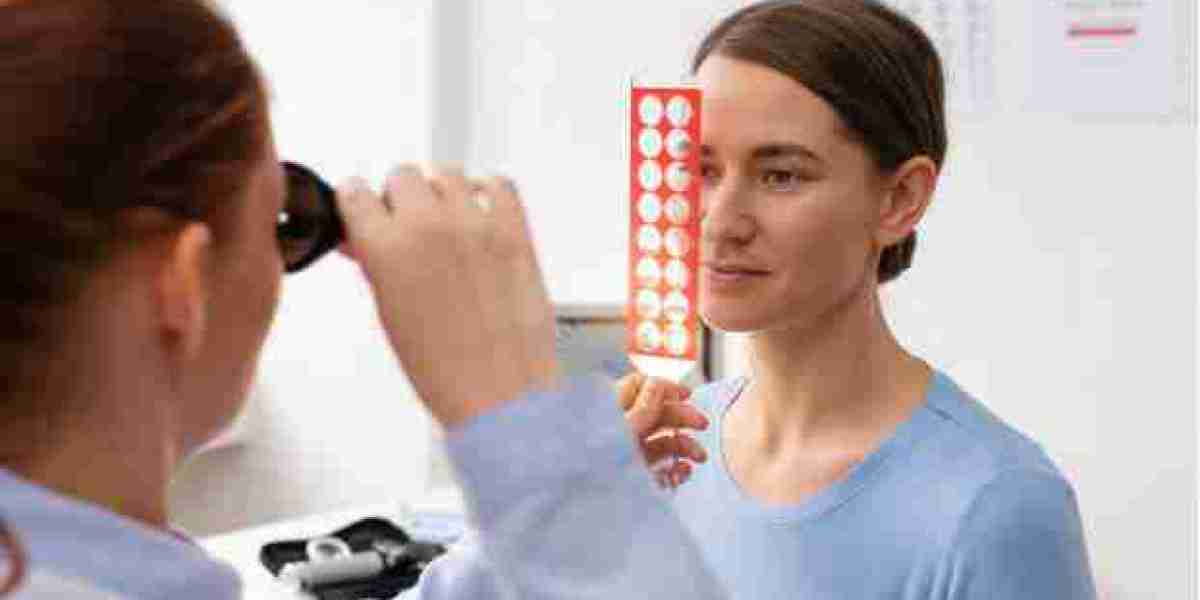High blood sugar, or hyperglycemia, is a common condition among people with diabetes. It occurs when the body is unable to produce enough insulin or is unable to use it effectively, leading to elevated levels of glucose in the bloodstream. While high blood sugar can affect several organs and systems in the body, one of the areas of greatest concern is eye health. Understanding the impact of high blood sugar on vision can help people with diabetes take proactive steps to protect their eyesight.
The Connection Between Diabetes and Eye Health
Diabetes can lead to several eye-related complications, primarily due to prolonged periods of elevated blood sugar levels. The mechanisms behind these complications involve damage to the blood vessels in the retina, the light-sensitive layer of tissue at the back of the eye. When blood sugar levels are consistently high, the delicate blood vessels can become damaged, leading to several eye disorders. These include:
· Diabetic retinopathy
· Cataracts
· Glaucoma
Each of these conditions presents its own risks and symptoms and understanding them is essential for people with diabetes.
Diabetic Retinopathy: A Major Concern
Diabetic retinopathy is a leading cause of blindness in adults. This condition occurs when high blood sugar levels damage the small blood vessels in the retina, leading to leakage, swelling, and the formation of new, abnormal blood vessels. Diabetic retinopathy typically develops in stages:
Early Stage: Non-proliferative Diabetic Retinopathy (NPDR)
In NPDR, the blood vessels in the retina begin to weaken and leak fluid. Patients may experience minimal or no symptoms at this stage, so regular eye exams are crucial. If left untreated, NPDR can progress to a more severe stage.
Advanced Stage: Proliferative Diabetic Retinopathy (PDR)
In PDR, new blood vessels grow in the retina and can bleed into the vitreous gel, causing vision problems. Symptoms may include:
· Blurred or distorted vision
· Dark spots in vision
· Sudden vision loss
Early detection and treatment are essential to prevent significant vision loss associated with PDR. Treatments may include laser therapy, intravitreal injections, or surgery.
Cataracts: A Common Complication
People with Diabetes and Your Eyes are at increased risk of developing cataracts, a clouding of the lens of the eye that affects the clarity of vision. Cataracts can develop more quickly in people with high blood sugar levels, causing symptoms such as:
· Blurred vision
· Difficulty seeing at night
· Sensitivity to light and glare
· Double vision in one eye
Cataracts can often be successfully treated with surgical procedures to replace the cloudy lens with a clear artificial one. Regular eye exams can help detect cataracts early and allow for timely intervention.
Glaucoma: Increased Pressure and Risk
Glaucoma is a group of eye diseases that damage the optic nerve, often due to increased pressure in the eye. People with diabetes are at higher risk of developing glaucoma, particularly a type called open-angle glaucoma. This disease can progress slowly and may not cause symptoms until significant damage has occurred.
Regular eye exams can help monitor eye pressure, Eye Flu and detect glaucoma in its early stages. Treatments may include prescription eye drops, oral medications, laser treatments, or surgery to reduce eye pressure and protect vision.
The Importance of Blood Sugar Control
Controlling blood sugar levels is critical to preventing or minimizing the impact of diabetes on eye health. Here are some key strategies:
Regular Monitoring:
Regularly monitoring blood sugar levels helps people understand how their lifestyle, diet, and medications affect their glucose levels. This knowledge allows for proactive adjustments to maintain healthy levels and prevent complications.
Healthy Diet:
A balanced diet rich in whole grains, lean proteins, healthy fats, fruits, and vegetables can help regulate blood sugar levels. Limiting the intake of sugary foods and refined carbohydrates is essential to maintaining overall health.
Physical Activity:
Regular exercise is crucial to controlling Glucose Test Results. Physical activity helps the body use insulin more effectively and can lower blood sugar levels. Aim for at least 150 minutes of moderate-intensity exercise per week, as recommended by health experts.
Medication Adherence:
For people with diabetes, adherence to prescribed medications, including insulin or oral hypoglycemic agents, is essential to maintaining optimal blood sugar levels. Regular visits with health care providers can ensure the effectiveness of the treatment plan.
Regular Eye Exams:
Regular eye exams are vital for early detection of diabetic eye disease. The American Diabetes Association recommends that people with diabetes have a comprehensive eye exam at least once a year, or more frequently if recommended by their eye care provider.
Recognize the Symptoms of Eye Problems
Understanding the symptoms associated with diabetic eye disease can help people seek timely medical care. Some symptoms to look out for include:
· Blurry or fluctuating vision
· Dark spots or floaters in vision
· Difficulty seeing in low light
· Frequent changes in eyeglass prescription
· Pain or pressure in the eyes
If any of these symptoms occur, it is essential to see an eye care professional right away.
The Role of Technology in Eye Health
Advances in technology have improved the diagnosis and treatment of diabetic eye diseases. Some of these innovations include:
Optical Coherence Tomography (OCT):
OCT is a noninvasive imaging test that provides detailed images of the retina and optic nerve. This technology helps detect early signs of diabetic retinopathy and monitor the progression of the disease.
Fundus Photography:
This technique involves taking photographs of the inner surface of the eye, including the retina, to identify abnormalities and monitor changes over time.
Telemedicine:
Telemedicine has gained popularity, especially during the COVID-19 pandemic. Remote consultations and virtual exams allow people to access eye care professionals from the comfort of their homes, improving access to timely care.
The Importance of Regular Health Checkups
In addition to regular eye exams, people with diabetes should prioritize comprehensive health checkups. Monitoring blood sugar levels, cholesterol, blood pressure, and kidney function are crucial for overall health and can help prevent complications associated with diabetes.
Regular checkups can also facilitate early detection of other health problems that may arise due to diabetes, ensuring timely intervention and treatment.
Support Organizations and Resources
Several organizations offer valuable resources, education, and support for people with diabetes and their families. Some notable organizations include:
American Diabetes Association (ADA): Offers information on diabetes management, including tips for eye health.
Diabetes UK: Provides resources and support for people living with diabetes, including information on eye care.
National Eye Institute (NEI): Provides educational materials on eye health and the impact of diabetes on vision.
Conclusion
Understanding the impact of high blood Sugar Test levels on eye health is crucial for people with diabetes. The risks associated with diabetic retinopathy, cataracts, and glaucoma highlight the importance of proactive monitoring of blood sugar levels and regular eye exams. By taking charge of their health, people can significantly reduce their risk of vision loss and improve their overall quality of life.
If you are concerned about your blood sugar levels or eye health, consider getting tested. Ampath Labs offers a variety of diagnostic services, including blood tests to monitor diabetes and its related complications. With their convenient services, you can take proactive steps to maintain your health and well-being. Regular checkups and a commitment to managing your diabetes can help ensure a brighter, clearer future for your eye health.













